Hands-On Review of the New Tamron 150-500mm f/5-6.7 Di III VXD Lens
The days have come to pass of which I couldn’t have dreamed to see. Sony full-frame mirrorless shooters have reached a photographic peak.
What some might call a sort of Nirvana, a miracle of lens production that not even a decade ago would have seemed virtually impossible. We now have native, high-end ultra-telephoto lenses available for our cameras.
It’s not that I didn’t know the day would eventually come, but that still didn’t dampen the sheer joy I felt when Tamron first announced the development of a “secret” telephoto for Sony full-frame mirrorless cameras.
And when I opened the email asking if I was ready to review the brand new 150-500mm f/5-6.7 Di III VXD, well, it’s safe to say I wasn’t exactly unhappy to say yes.
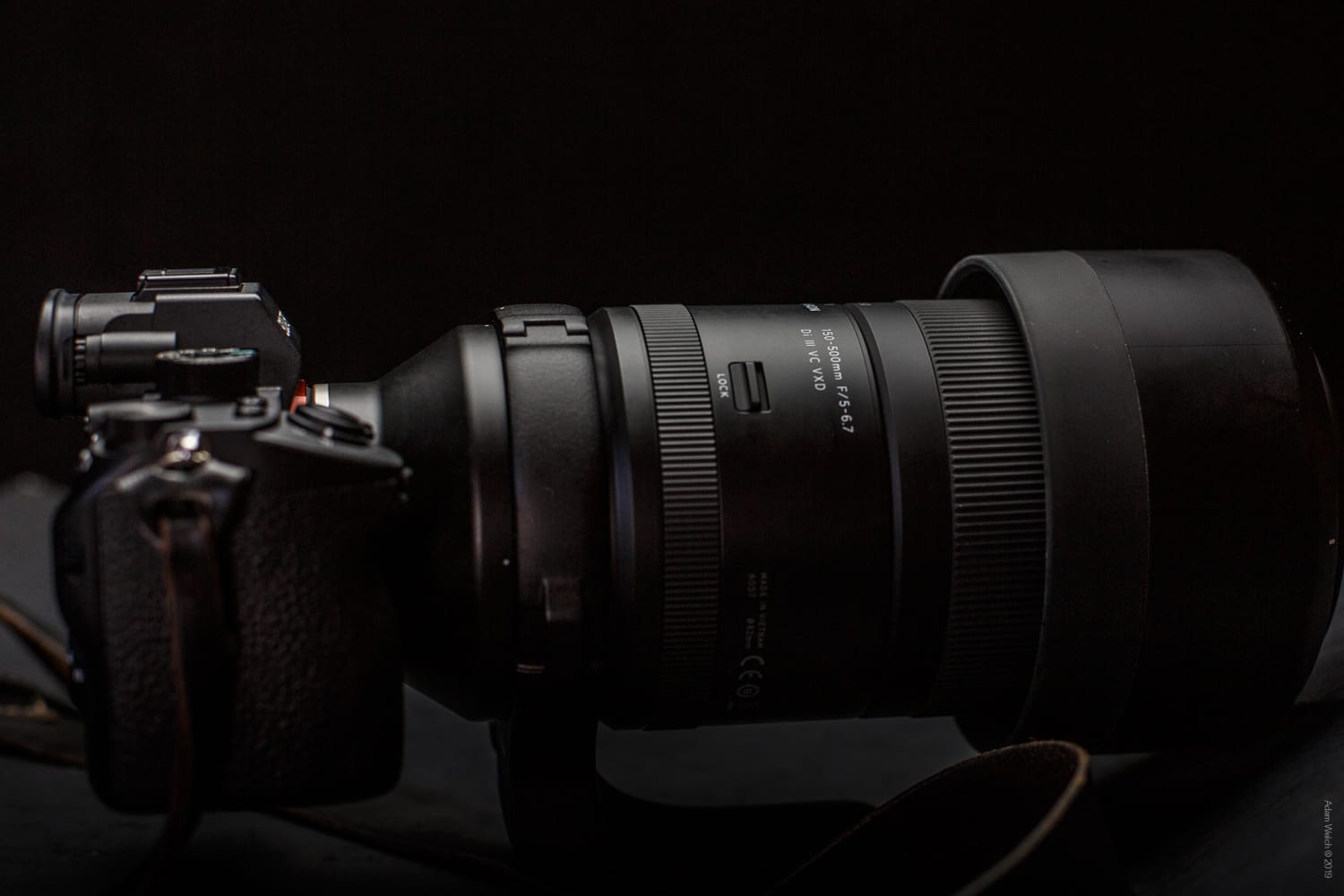
One of the reasons for my poetically juvenile excitement was primarily due to those last three little letters in the lens designation— “VXD,” which stands for Voice-coil eXtreme-torque Drive, Tamron’s latest bit of autofocus technology. I fell in love with the performance of the VXD AF system when it was first introduced with Tamron’s 70-180mm f/2.8 Di III VXD for it being freakishly quiet and as accurate as any AF I had experienced up to that time.
So, pure elation ensued when I found out that Tamron included this feature on the 150-500mm instead of their RXD AF motor.
But wait, I’m already ahead of myself. First, we need to get a handle on some other points about the 150-500mm that you need to know before we even begin to discuss that sexy VXD autofocus.
The 30 Second Rundown
Suppose you prefer your reviews short, sweet, and as brief as possible. In that case, all you need to know is that this lens is ferociously sharp, produces wonderful contrast and color, yet still manages not to require potential resale of any of your expendable body parts to own it.
The bad? I’ll go ahead and say it, the 150-500mm feels like a bit of a boat anchor, curiously so if we’re honest. It’s heavy, not in a “haha grow stronger” sense of heavy, but the weight could be an issue for some users who intend to sling this setup for extended periods of time.
There. That’s it in a nutshell for the time-pressed among us. If you want to dig a little deeper into the merits and drawbacks of the 150-500mm f/5-6.7 Di III VXD… keep reading. And if you happen to be the type who enjoys watching more than reading, have a look at our massive video review below.
Out of the Box
There are some surprisingly interesting things to mention about my first impressions of the 150-500mm. Namely, Tamron has introduced some cool little features with this lens. However, keep in mind that I love cool little features… and tend to ramble a bit about them as a result, which is fine.
First off, the lens itself looks great—flat black with white lettering and markings.
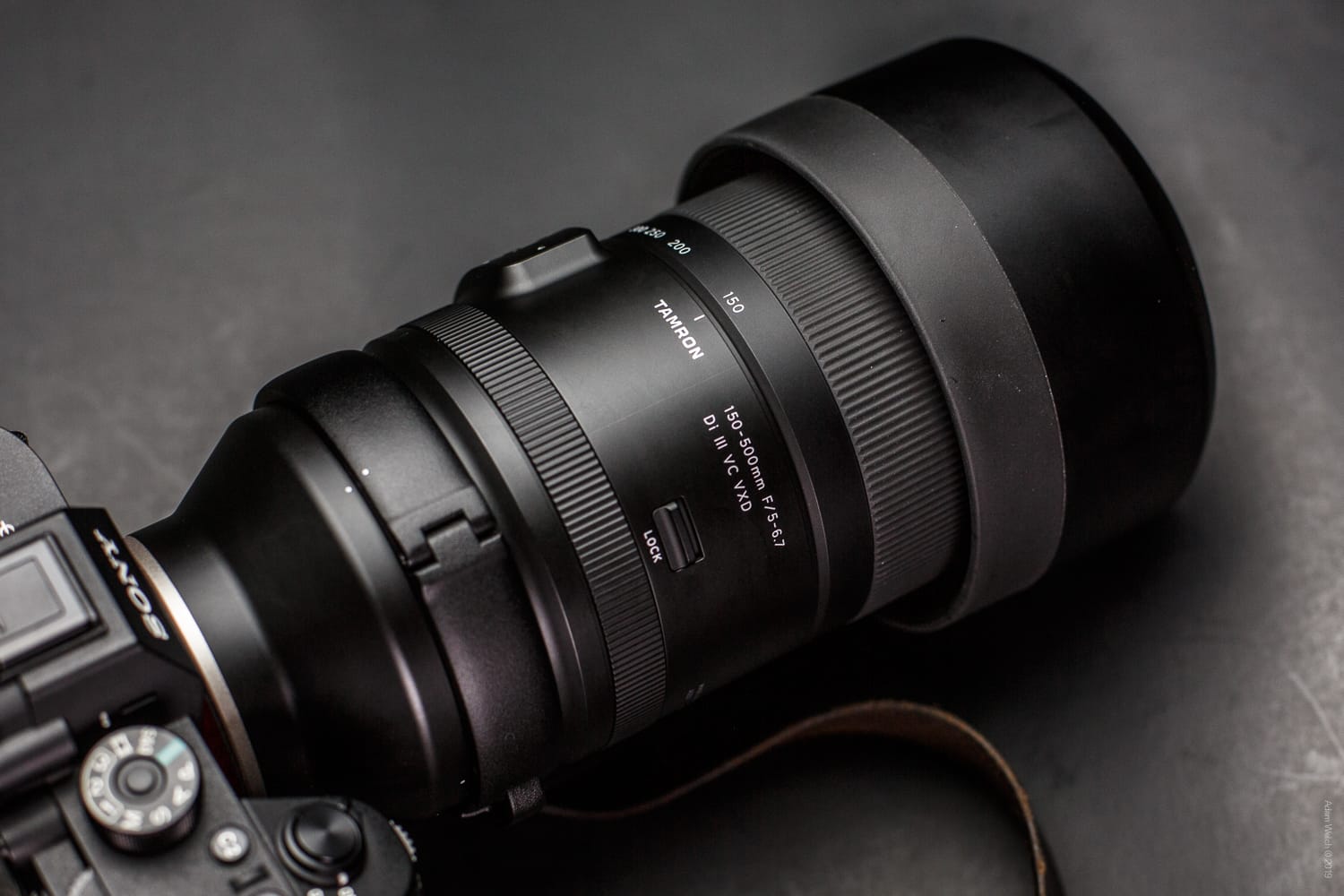
The rather large lens hood (which is expected) is the first thing that sports some new engineering. Its front rim has been rubberized. I know, extremely exciting…
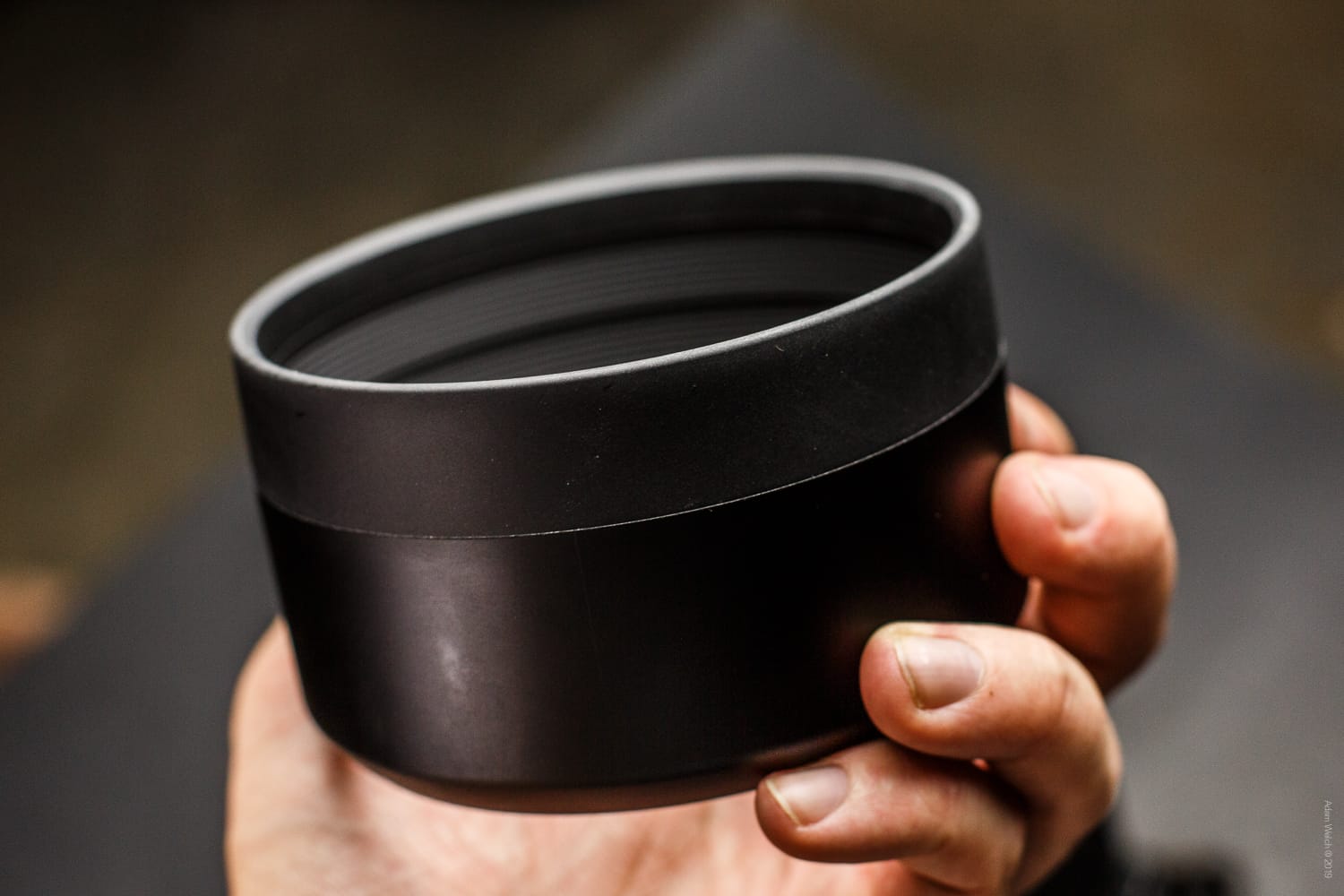
Well, in a way, it sort of is exciting, especially from the standpoint of practicality. This slight bit of rubberized real estate on the lens hood adds a subtle layer of protection to the hood itself when absorbing little bumps and bruises while in the field or when resting the lens nose-down on hard surfaces. Furthermore, in a less utilitarian sense, this extra bit of grippiness would make attaching and removing the lens hood easier in less than auspicious conditions, i.e., wet hands, wearing cloth gloves, etc.
And this rubber coating doesn’t stop with the hood. It has been applied to the front of the lens barrel itself. Granted, it’s slightly less obvious, but it’s definitely there.
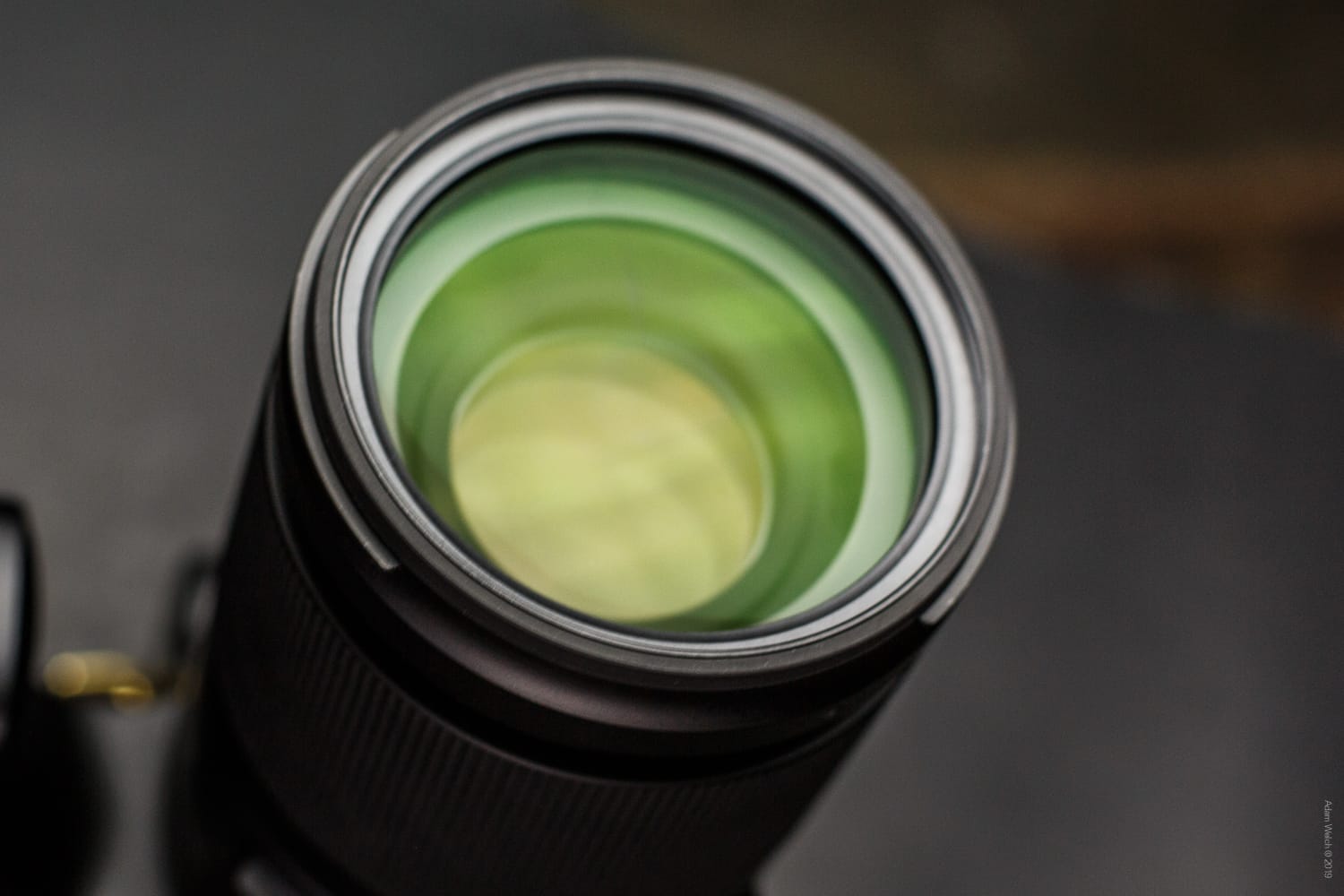
You’ll also get an easily removable tripod collar in the box, which is nice. Still, aside from that and my obvious affinity for Tamron’s choice to rubberize parts of the lens, the rest of the body is unremarkable. I will mention, however, that if you’re not accustomed to using telephoto lenses in this class, you might be a bit taken aback at just how “busy” the lens body seems to be. There are quite a few switches that you don’t normally experience on other focal length lenses.
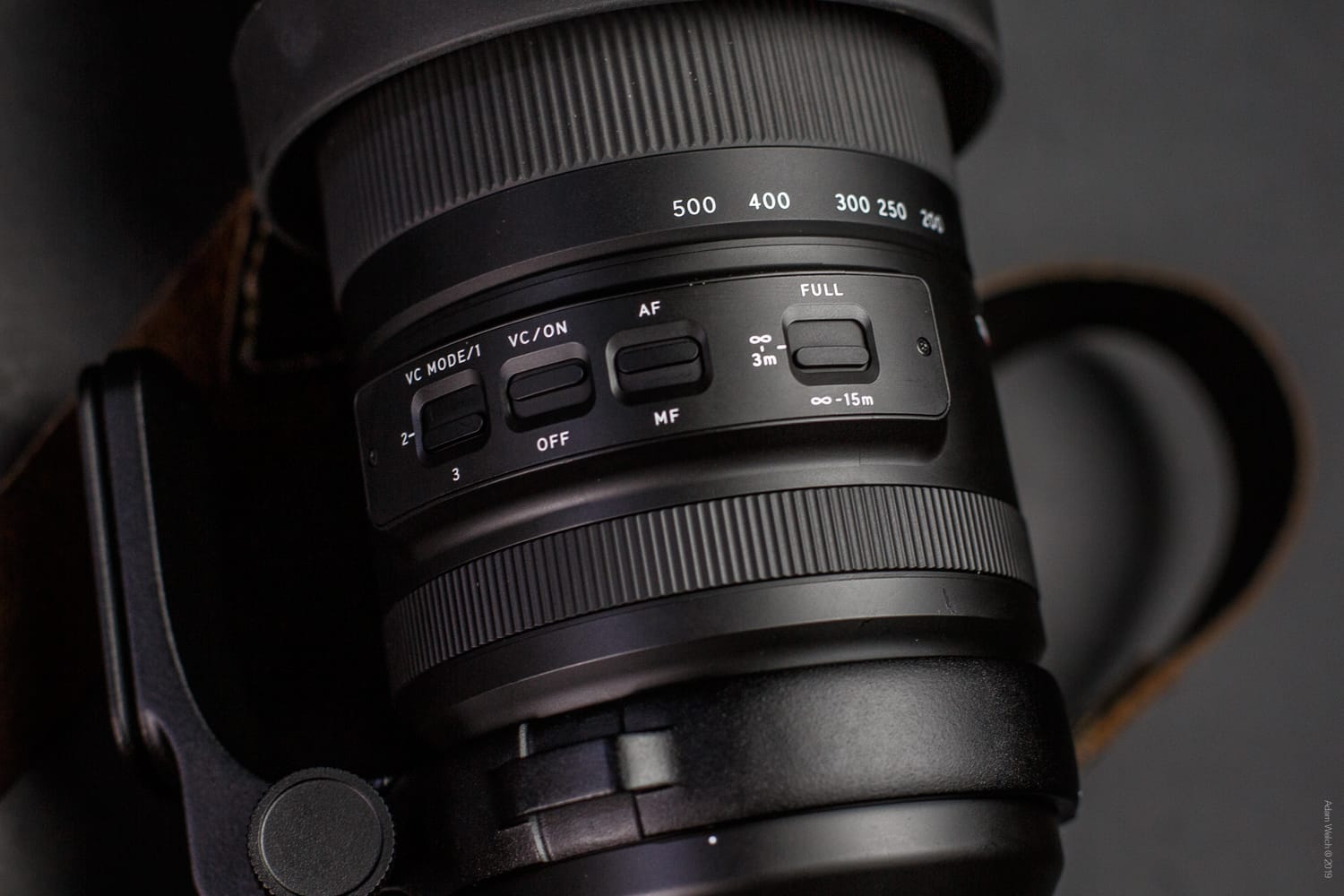
We’ll discuss the rest of the controls a bit later, but for now, I want to explain the 150-500mm zoom lock capabilities before we move on because this is another less obvious yet wonderful feature of this lens.
You have, of course, the standard zoom lock switch. This will lock the lens at its shortest 150mm focal length to prevent lens drift while transporting the lens.
What you might not realize (I didn’t when I first encountered it) is the well-hidden “Flex” zoom lock. It’s tucked away around the lens barrel. Pull forward on the zoom ring to engage. This mid-range zoom lock will arrest the lens at ANY of its focal lengths from 150mm to 500mm. I love this. It’s perfect for preventing accidental changes to your focal length and allows you to be much more flexible when changing shooting positions.
Now, before we move onto the lens’s performance, let’s discuss that pesky issue of weight. In truth, the lens is relatively light for its focal length and AF/VC capabilities. At the very least, it’s not astronomically heavy when compared to other lenses in its class, weighing in at around 3.8 pounds (1.72kg). That being said, this lens feels well; how can I describe it? This lens feels weirdly “dense,” if that makes any sense to you.
It feels heavier than its respectable three and a quarter-pound heft might lead you to believe. Granted, the tripod collar adds a tad bit of extra bulk (about 5.5oz or 155g), but the entire package certainly carries its own gravitational field. This is compounded by the relatively small size of the Sony camera body itself. I was shooting on an A7R MK3, which is not even the smallest possible body you might mount this on, and it still felt extremely nose-heavy. However, as you likely know, this conundrum of balance is often the nature of the beast when shooting with a mirrorless camera.
Here’s a full list of specifications courtesy of Tamron:
| Information | Values |
|---|---|
| Model | A057 |
| Focal Length | 150-500mm |
| Maximum Aperture | f/5-6.7 |
| Angle of View (diagonal) | 16°25′-4°57′ (for full-frame mirrorless format) |
| Optical Construction | 25 elements in 16 groups |
| Minimum Object Distance | 0.6m (23.6 in) (WIDE) / 1.8m (70.9 in) (TELE) |
| Maximum Magnification Ratio | 1:3.1 (WIDE) / 1:3.7 (TELE) |
| Filter Size | φ82mm |
| Maximum Diameter | φ93mm |
| Length without hood | 209.6mm (8.3 in) |
| Weight without tripod collar | 1,725g (60.8 oz) |
| Aperture Blades | 7 (circular diaphragm) |
| Minimum Aperture | f/22-32 |
| Standard Accessory | Round-shaped hood, Lens caps, Tripod mount |
Performance
In terms of overall image-producing capability and autofocus, the 150-500mm shines. Refer to the video review for a super in-depth examination of the review images and the various AF and VC modes. I’ve included a more condensed version (along with samples) below for the less obsessed among us.
Sharpness, Color, and Contrast
Remarkably sharp. That is the best way I know to characterize the images coughed out from the 150-500mm. This seems somewhat par for course these days from Tamron. Except for the 28-200mm f/2.8-5.6 Di III RXD (for which I may be its only detractor), virtually every one of Tamron’s recently released E-Mount lenses have been blindly sharp, especially that 70-180mm that I mentioned earlier.
I’m happy to say that the 150-500mm is no different. Its center sharpness across all apertures is absolute bliss.
I did notice slight softening towards the edges of the frame at narrow apertures (beginning around f/22) but virtually no chromatic aberration or distortion. Contrast and color were just as good as the sharpness. I’ll go further to say that, with a decently accurate white balance, even straight from camera RAW files were essentially usable as-is. Here is a selection of some of those RAW images for you to feast upon:

150mm, F/6.3, ISO 1000

150mm, F/6.3, ISO 1000

150mm, F/5, ISO 1600

500mm, F/6.7, ISO 100

500mm, F/6.7, ISO 1000

500mm, F/6.7, ISO 50
Auto-Focus, Vibration Control, and Weather Sealing
As you’ve likely already gathered, I’ve been smitten with the AF of 150-500mm ever since the first time I fired up the lens. For that matter, all of the “peripheral” functions are quite impressive. Here’s a breakdown of the supporting features held within this lens that lie outside the image quality itself.
Autofocus
Ooof. That VXD, though. It’s a lengthy name for an AF system, “Voice-coil eXtreme-torque Drive.” I have no idea where the “voice” in VXD comes in, as the AF motor didn’t speak to me, at least not yet. All the same, it is an impressive-looking piece of technology.
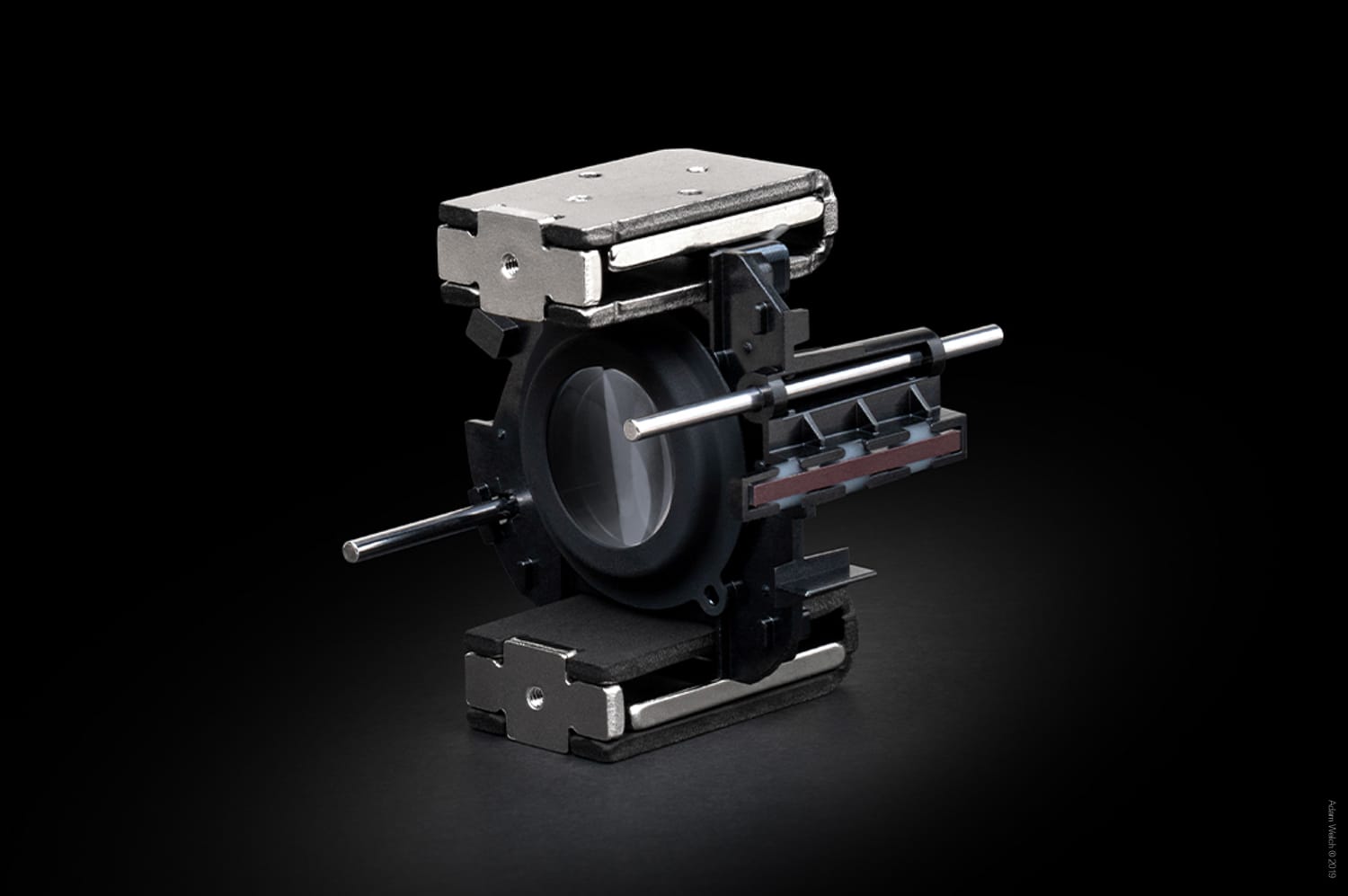
I mean, just look at that thing. It seems like something that could send you back in time. The truth is, one of the reasons why I’m so in love with Tamron’s VXD is because of how fast and quiet it seems to be when compared to some of my other lenses. Granted, I’m a huge fan of fully manual vintage lenses, and that’s what makes up most of my lens repertoire. So perhaps I’m not that easily impressed.
That being said, I have reviewed A LOT of autofocusing lenses, and from my hazy recollection, the VXD system has been what has impressed me the most. You need to experience it firsthand to understand it truly, so I won’t waste your precious time attempting to describe it here. Still, we need to talk about a few things that concern the AF of the 100-500mm in particular.
Remember when I said the body of this lens is somewhat busy, that is, relatively cluttered? Well, that is partly due to the available AF modes. On many ultra-telephoto lenses such as this, you have the options to limit the AF sensitivity based on your object distance. With the 150-500mm, you can select “full” AF sensitivity, which allows the lens to search for focus at any distance. You also have a “3 meter to infinity” mode, limiting close AF focusing to three meters. And lastly, there is the even more discerning “15 meters to infinity” setting which, as you might guess, limits the AF sensitivity to fifteen meters and beyond.
These selective AF modes are especially useful when shooting in crowds, densely wooded areas, or else you might encounter distracting foreground elements that might interfere with the AF while attempting to focus at long focal lengths.
Vibration Control and Weather Sealing
The majority of Sony’s cropped and full-frame sensor mirrorless cameras now feature built-in image stabilization. Hence, as time passes, fewer and fewer E-mount lenses include an external image stabilization switch. That is not the case with telephotos such as the 150-500mm. You have three modes of VC (vibration control) from which to choose… four modes if you count the VC ON/OFF option.
The VC modes can be somewhat confusing even for those who are readily familiar with their functions, so I’ve included an excerpt directly from the Tamron USA website for the sake of accuracy:
The 150-500mm F5-6.7 is equipped with VC (Vibration Compensation) functionality to support sharp images despite unavoidable camera shake. VC delivers powerful support for handheld shooting of scenes with low light levels, such as evening scenes and indoor shots, without the use of a tripod. The lens also features a VC mode selection switch with three modes, including a dedicated panning mode (Mode 1: Standard, Mode 2: Exclusively for Panning, and Mode 3: Framing priority), thereby enabling selection of the ideal VC mode to match shooting conditions and preferences.
VC MODE 3 prioritizes framing and helps you to frame fast-moving subjects easily. In mode 3, VC stabilization is effective from the time the camera power is turned on.
In practice, the VC of the 150-500mm performed beautifully. I especially have come to enjoy the VC Mode two, which is primarily intended to aid when panning from a tripod.
Lastly, a brief word on weathering sealing. I know, I know, if you’ve read any of my other Tamron reviews, you’ll understand how much I appreciate that extra comfort of the visible weather sealing gasket on the lens bayonet.
The rest of the lens is sealed at major entry points for moisture and dirt as well.
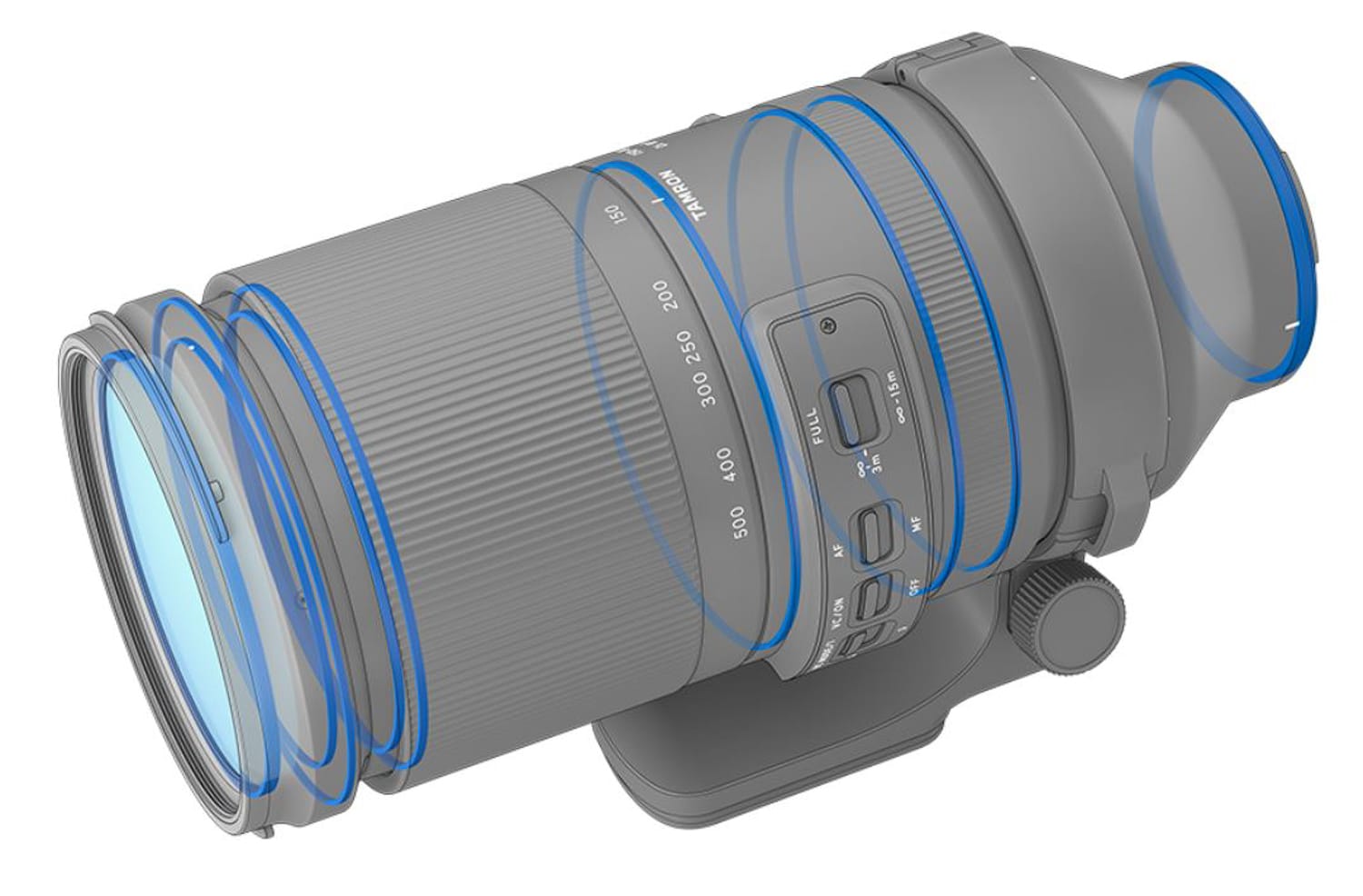
In short, I have shot with multiple lenses from Tamron, which feature this beefed-up weather sealing, and have experienced zero issues. This includes making photographs in sudden downpours, saltwater spray, and multiple weird adventures throughout the deserts of the American southwest.
Final Thoughts on the Tamron 150-500mm f/5-6.7 Di III VXD
The worst part about this lens is the weight. While not even four pounds, it still could be bothersome for some when the shooting wears on for extended periods of time. This shouldn’t scare you off, though, because the 150-500mm more than makes up for its body weight with its incredible image quality and blazingly fast VXD autofocus. Its stubby length contributes to excellent packability.
The price? As of the writing of this review, the cost of the 150-500mm f/5-6.7 Di III VXD clocks in at just under $1,400 US. At the very least, that makes it a perfectly viable option for those seriously searching for a phenomenal super telephoto lens for their Sony mirrorless cameras.
If I had to choose one long-range telephoto workhorse for my Sony, this would be the lens.
